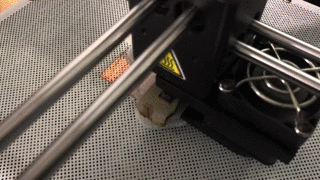How I Learned to Embrace My Inner Lazy, Impatient Idiot
How negative traits can actually be hidden superpowers
We all know the feeling of trying to squash our more unfortunate traits and tendencies. No one wants to leave dishes in the sink for days, or find themselves unprepared for a meeting! But since starting at X’s Project Wing over a year ago, I’ve discovered that three traits typically perceived as negative — ignorance, laziness, and impatience — are actually hidden superpowers…
Ignorance, laziness, and impatience
How could this reprehensible trio possibly be superpowers? And how could they have helped me to stay on top of things in a fast paced environment? As with all superpowers, these traits can be used for good and for bad. And to be used for the good, one thing is absolutely crucial: awareness.
Imagine Clark Kent being completely unaware of his unbelievable strength… and he’s about to high five his colleague for the very first time. (Well, better to not imagine that, actually). Let me just explain instead:
Ignorance
“The greatest obstacle to discovery is not ignorance - it is the illusion of knowledge.” — Daniel J. Boorstin
Ignorance by itself is not a bad thing. It is part of growth. There are always going to be things that you have no clue about or experience with. This is especially true at a place like X where we’re creating technologies that have never existed before.
So the key to make ignorance a useful superpower is the full awareness and acknowledgment of it. Full acceptance of your present limitations makes you fearless, curious, and genuinely humble. It enables you to identify gaps early and to fill them efficiently. Rather than trying to hide your ignorance, surfacing it early in a process can save you and your team time, energy, and resources.
If you have to move fast in a new space with an ambitious deadline, comprehensive study of a new field may not be an option. And even if you did manage to read all the books on a topic — if there even are any — at the end of all those sleepless nights, it will still not give you experience.
The difference between knowledge and experience can’t be emphasized enough. The former is obtained relatively quickly and forgotten easily. The latter is far more precious. Five years of experience in a field takes five years to get. Period. And unlike knowledge, it sticks with you for the rest of your life.
So how does awareness of your ignorance and your limitations make you move fast?
It will enable you to be more proactive, ask the right questions at the right time, and your humility and authenticity will significantly improve your personal relationships, providing you with access to the most effective accelerator: experience.
There are three steps I have applied successfully to my own projects, and I will try to make them more graspable with a geeky analogy:
A multi-core computer (that’s the type of system powering the phone, tablet or computer you’re reading this from now) can process a task incredibly fast by doing something called “parallel computing”. Parallel computing is where the operating system (OS) intelligently divides a problem into several, smaller subtasks and solves them on multiple processor cores in parallel. Eventually, the individual results are combined again to produce a single output.
Step 1: create your operating system
So, let’s say you have a unique problem to solve and a tight deadline. First, start with your own research, so you can create your own parallel computing approach. Read, research and talk to people — the goal is to be on top of the pile of lessons learned about the topic so far, to be able to ask educated questions (and make the right conclusions), and to identify the people with the right experience who can help solve the problem. Not more, not less. This knowledge level will provide you with the framework you need for the next steps. It will be the OS for your own, super efficient, project computer.
Project Wing completes a food delivery at Virginia Tech in 2016
The work we did to develop our current Wing delivery packages is a good example of such a unique challenge. We needed to make a box that could be flown through the air as fast as a car on the highway without it ripping apart at such high wind speeds. On top of that it had to be green, cheap, and user friendly. And since “cardboard box aerodynamics” isn’t a course in engineering school (yet), a custom OS was needed for that one!
Step 2: add your processor cores
Now that you’ve done your research, you’re able to identify the people with the experience to give your project a significant speed boost. They’re the high end processor cores of your computer. The key here is to find the people with true love for their field of expertise. It doesn’t matter how narrow the field is. You can go broader and create combinations matching your specific problem by simply adding more cores. They can be team members or external resources. Redundancy doesn’t hurt either, since it can increase the integrity of your solution and reduce workload on individual cores. A good indicator that you’ve found the right people is their ability to explain specifics of their field in a simple, understandable way.
The Wing package project turned out to be a very interesting combination of cores: packaging designers, aerodynamicists, mechanical engineers, material specialists, UX researchers, cardboard manufacturers, and…last but not least… Xers with some serious origami skills! It’s just so much fun to see how the development of something truly new brings people together whose fields would normally never touch.

Honing our origami skills
Step 3: run multi-core!
Ok, now you have a framework and you’ve identified who can fill your gaps quickly. Perfect! With the knowledge you acquired in step 1, you should be able to ask efficient questions. Questions that are well prepared and don’t waste people’s time, “overheating” the cores. Questions that target experience and, most importantly, trigger the passionate side of your cores. My personal experience is that if you shut up, listen, and show genuine appreciation, the cores will give you even more output than you originally asked for. People love to help with things they’re good at. They don’t see it as work. You simply have to let them do it!
Now you just have to keep your cores running in parallel, combine them to create new things, keep them “cool”, and be amazed how fast you can process your project.
The Wing package “computer” produced a nice variety of delivery packages suitable for different applications within a very short time frame. One of our latest versions was just tested in the wind tunnel and its drag coefficient is even better than some of the most aerodynamic cars available today. Not bad for a cardboard box!
Laziness
“Simplicity is the ultimate sophistication.” — Leonardo da Vinci
I’m not talking about the “I sleep all day” kind of laziness. I mean good laziness. The laziness you are aware of and can use as a valuable sensor.
If your “inner lazy” goes off, that’s usually a good indication of an inefficiency! If the phrase “There must be an easier way” comes to your mind, it will often lead to the question “what if…?”. And that’s when something awesome gets invented!
You are never lazy, you say? Ok, let me challenge that: it’s late, it’s raining, you relax on the couch, and then a voice in your head reminds you… “It’s Tuesday, trash pickup tomorrow morning”. Imagine if the cans could travel to the curb by themselves? Wouldn’t that be nice? (Don’t worry, Colin is working on it).
Many useful inventions were triggered to a certain degree by laziness, like cars, dishwashers, and power tools. And that’s good! Why travel slowly, wash dishes, and turn screws by hand if these tasks can be automated, giving us time to do more productive things instead?
Laziness can be a powerful source of creativity and can help you simplify complex problems. So if you need to move fast, turn your good laziness into speed! You ought to be too lazy to build something from scratch when instead it could be shipped to you off-the-shelf over night. Be too lazy to do repetitive stuff that can be automated by a simple script. Be too lazy to constantly patch a complicated system if it can be simplified. The list goes on.
Early prototypes of our Wing package could not be folded flat due to the aerodynamic shape. This made it very time consuming to glue a box together. What’s more, we needed to find a way to flatpack the boxes in order to scale up. The team’s inner lazy went off immediately! After some rigorous origami study and countless paper cuts (ouch!) we created a unique pattern that allowed us to fold it flat, making gluing a snap!
There is, however, one thing you should not be too lazy to do: never skimp on the proper research. You need to know what’s out there, understanding the field you’re working in and seeing what’s “state of the art” before you jump into action. Reinventing things that already exist is a combination of harmful “ignorance unawareness” and a really unproductive type of hard-working.
Impatience
“I’m impatient. I get twitchy. When I get that feeling I just go out and make something happen.” — John Cale
There are countless forms of toxic impatience, but with the right dose, applied to the right things, it is a good superpower. There’s no true progress if we aren’t a little impatient with the status quo. It urges us to take action, to make things happen.
A healthy level of impatience is fuel for visionary thinking; it creates enthusiasm, drive and ambition. Look at the most impactful visionaries of the past and today; it is not hard to see that certain impatience with the usual pace of innovation contributed to their success.
Good impatience will make you recognize opportunities. It will drive simplicity. It will make you find the fastest tools available. It will make you break rules (in a productive and responsible way, of course). And it will enable you to fill gaps actively and immediately, helping your team to keep momentum.
At X, we use the latest and fastest in 3D printing technology to prototype parts for our projects. Our “good impatience” also got us into the habit of timing our design work in such a way that we start prints right before we go home. This way we can even be productive while sleeping!

3D printed logo (if only the printer would be as fast as this GIF!)
And the next morning the new part is waiting for us, ready to be tested during the day. Of course, I sometimes still feel the printers should be even faster… but I’m sure someone is working on that already!
That’s it. After so much reading, it is possible that your inner lazy has gone off by now. Time to try out the “text to speech” function on your phone for the next blog post… and make sure to do some tinkering in parallel!
Special thanks to “core” Taliver Heath who helped me create the catchy title for this post!